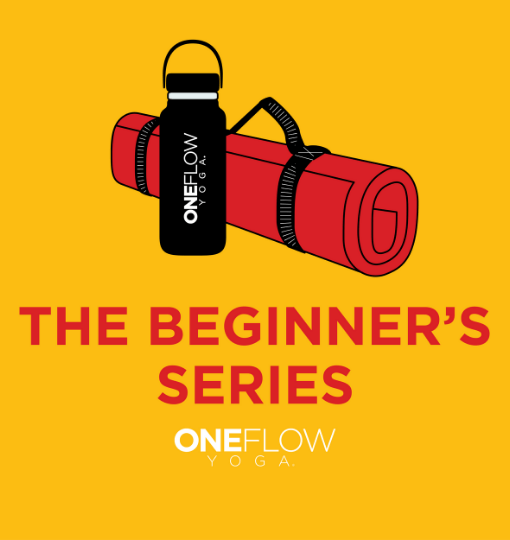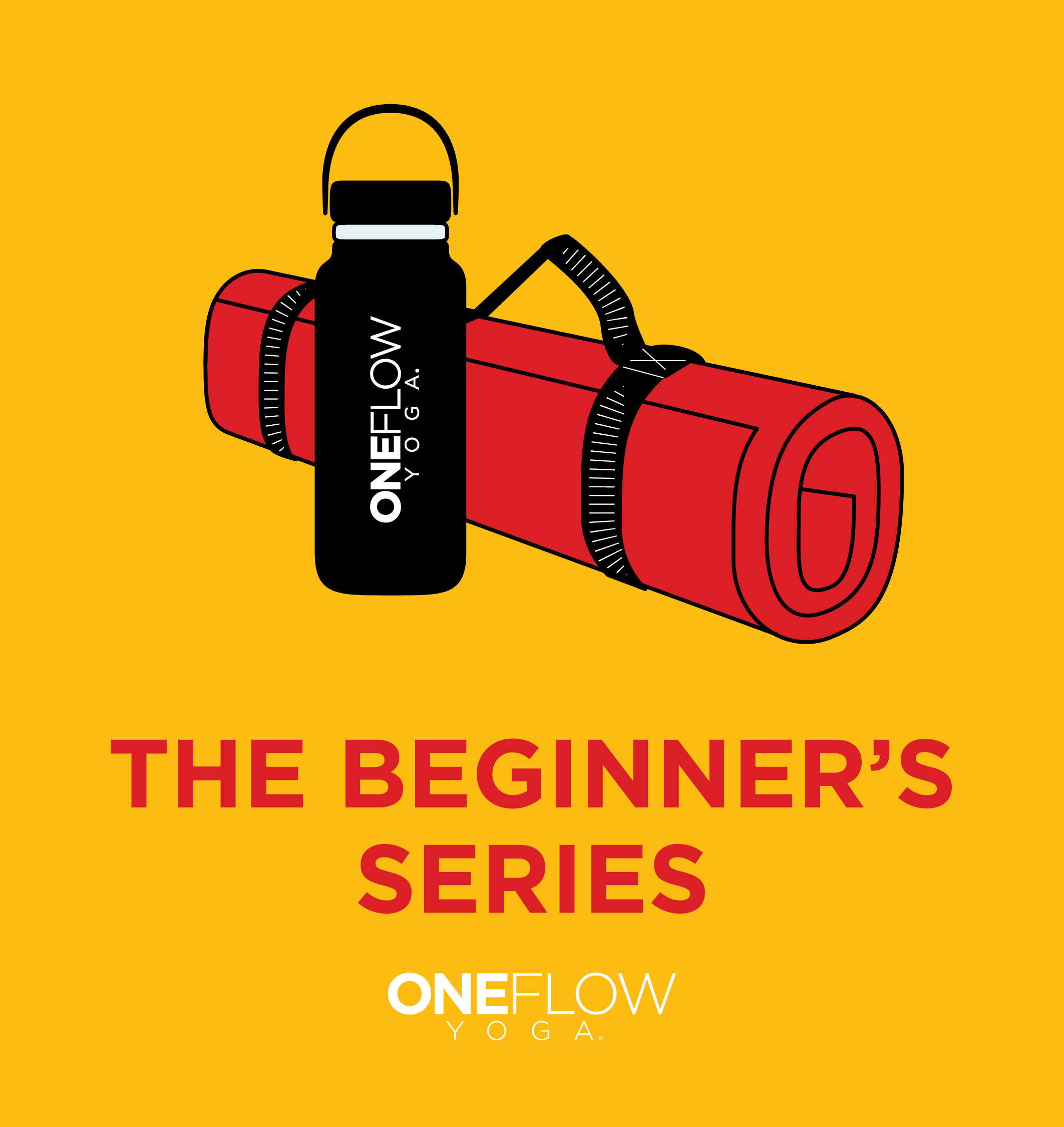Ujjayi breath is the most common type of breathing exercise we do in yoga, yet it’s often misunderstood, taught incorrectly, and comes with several false suspect claims.
AND it’s worth exploring because it does have some real benefits and can absolutely help you find the calm and relaxation you were promised when you started yoga.
Ujjayi breathing, to get a real feeling
Yogi gonna let you know
That I wish you were here with me
Ziggy Marley “Beach in Hawaii”
Before we jump in and explore Ujjayi, it’s important to say there is no “right way” to breathe that will work all of the time. Breathing is affected by many factors.
Also, this is not a full discussion of breathing or of the respiratory system. For that, we need several hours. And to do it, we’d need anatomy, physiology, chemistry, math, and most likely strong coffee.
My aim here is to clarify Ujjayi because of how ubiquitous it is in yoga.
What is Ujjayi Breath
The full name is Ujjayi Pranayama, and it’s the basic breathing technique we use in yoga practice. Pranayama (See Pranayama below for a fuller description) is referred to as the practice of breathing or breathwork.
There are other forms of breathwork in yoga, including Kapalabhati, Bhastrika, Nadi Shodhana, but Ujjayi is the most common.
How to Pronounce Ujjayi
People have a tough time spelling Ujjayi, let alone saying it.
The pronunciation for Ujjayi is “ooh-JAI-yee.”
It has three syllables.
The “ooh” is like the oo in the word “room.”
The Jai rhymes with “tie” or “chai.”
Yee rhymes with “tea.”
Put it all together, and it sounds like you are getting excited to drink your favorite hot beverage. Ooh, chai tea.
Ooh-Jai-yee. Ujjayi.

Meaning of Ujjayi
Jai translates as “victory,” which is why Ujjayi is called the “victorious breath.”
Technically, Ujjayi comes from the language of yoga, Sanskrit, and has a root of “ji” (that’s the jai) and a prefix of “ud.” Ud has many meanings, including upwards or to imply higher in rank.
Why is Ujjayi Breathing Victorious?
To find the answer, we can call up our local reference librarian for a work at least three centuries old called the Gheranda Samhita. In it, Gheranda states Ujjayi allows you to be victorious over decay and death.
The idea is simple. Breath right, and you’ll never die.
Is that true? To the best of my knowledge, Gheranda isn’t still around, but your results may vary.
Pranayama
Pranayama is breathing practice.
Yes, it raises a few eyebrows at first to think that anyone needs to practice at breathing. If you need that, surely an oxygen mask isn’t far behind.
But pranayama is another way to practice yoga.
No, pranayama doesn’t win any popularity contests when people imagine doing yoga. That distinction goes to its brethren asana, the physical practice that uses yoga poses, and meditation. Both help to calm and focus the mind.
Quick Note: Here’s a helpful video created by the Stanford School of Medicine on Breathing Basics.
Pranayama has two parts—prana and (a)yama.
Prana is another word for inhale and also means “life-force.”
Yama is usually translated as “restraint.” When you impose yama, you are trying to control or rein in. BUT, there’s an “a” in front of it, which means not. This gives us not restraining.
The truer intention of the word becomes more evident when you play with the positive, or opposite, side of restraint—expansion. Thus when we practice pranayama, we are trying to expand our breath and life force.
Just like asana and meditation can be practiced on their own, so can pranayama. Working with your breath can teach you a lot about how you engage with the world. We’ll revisit this in the section “Why Do We Use Ujjayi.”
Ujjayi is a specific type of pranayama. And there are many others.
Benefits of Ujjayi Breathing
As you read about the benefits of Ujjayi breath online, keep in mind that some of the benefits touted come from tradition before the science of respiration developed.
Also, when yoga teachers teach a concept like breathing, sometimes they speak of a practical idea, and other times they are being metaphoric.
To help you, we’ll break this into two sections, actual benefits and those that are suspect or at least deserve suspicion.
For those of you who like a simple list, we’ll start there and then expound on it when talking about how Ujjayi breathing helps your practice.
Benefits
- Lengthens your breath
- Strengthens your lungs and diaphragm
- Begins to warm your body
- Gives you something to focus on
- Can help you practice yoga in a safe manner
- Can bring you into the present moment
- Helps to create stability in the body, which is why people say it can “tone and tighten”
- Stimulates your vagus nerve and can calm anxiety
Suspect Claims that Deserve Another Look
Detoxifies and clears toxins.
We could write a book about this one claim, starting with what is a “toxin.” For now, we’ll deem it as any substance that is bad for your body.
You have a lot of ways to “remove toxins in your body,” including peeing, sweating, etc. Your liver should also get high marks for the journeyman work it does detoxifying.
Breathing does help you get rid of the waste gas carbon dioxide, technically a toxin. But that’s what healthy lungs do—you don’t need a particular breathing technique for that.
Builds energy and warms the blood.
If you want to build some energy, you’re going to want another breathing practice like Kapalabhati. Ujjayi excels at calm rather than stimulation. However, you can make the case, depending on how you do it, that Ujjayi takes effort, and that has a warming, energetic effect. Keep it simple. If your goal is to warm up, move your body.
It oxygenates your blood.
Like in the energy claim, if Ujjayi is helping you to calm, it isn’t getting your heart to pump faster to increase your oxygen intake. However, when you pair Ujjayi with asana, the physical practice can help ramp up your heartbeat, depending on how you do it.
One more thing to consider. More oxygen isn’t always a good thing. Your body has mechanisms to regulate the amount of oxygen. It ensures you don’t get too much nor too little.
Brings in more life force.
Hmm, if there’s no life force within you, you probably have a more serious issue going on because the opposite of prana, life, is death.
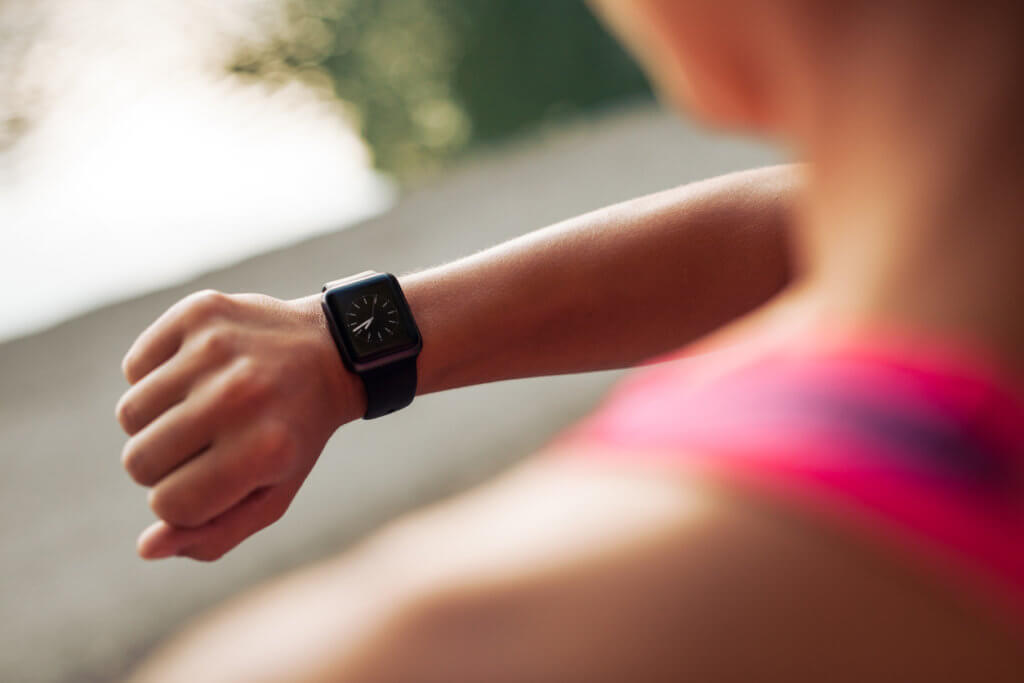
How does Ujjayi breathing help your yoga practice
Gives you helpful, real-time feedback
Before there were smart watches, there was listening to your body. Yes, breath is the original feedback device. If you pay attention to it, it will tell you if you’re working hard enough or too hard. It will also give you a sense of how relaxed you are and the effort you are putting forth in your practice.
For instance, if you are gasping and wheezing, odds are you are working way too hard. That’s why runners have a “talk test” that recommends you should always be able to talk while running to indicate a “moderate effort.”
In yoga, our test is Ujjayi, and being able to do it in a smooth, consistent manner.
Brings you into the present moment
When you focus on your breath, it brings you into the now. Breath always happens in real-time. This is why it is used as a tool of meditation where the goal is to be mindfully present. Using Ujjayi breath can transform your asana practice into a “moving meditation.”
Calms your mind
There’s an easy way to calm your mind; calm your breath. We intuit this naturally because when someone is freaking out, we say, “take a deep breath.” Yoga practitioners have known for millennia of the effects of the breath on the mind.
Creates stability in your body
The technique of Ujjayi creates a constriction in your glottis. This causes your body to use more muscular effort and creates a “kind of back pressure throughout the abdominal and thoracic cavities.” Leslie Kaninoff, Yoga Anatomy. This has a stabilizing effect that can support the movements in a flowing practice like Vinyasa.
Calms your nervous system
Because Ujjayi stimulates your vagus nerve, it has an overall calming effect on your nervous system. This helps to quell anxiety and can have a positive impact on depression.
What does Ujjayi Sound Like
One telltale sign of Ujjayi breathing is its sound. Sonorous and sibilant, or deep and resembling an s, Ujjayi accurately sounds like the ocean and is sometimes referred to as ocean breath.
Please note, it’s a gentle ocean on a beautiful day when you are walking along the edge and hear a wave that has crested and turned into white water about to tickle your feet. These are not gale-force winds that sails struggle against, and sailors fear.
You can learn it by making the gentle sound of the ocean, first with your mouth open and then closed.
Though many sources cite the sound coming from the back of your throat, that’s not entirely accurate. The vocal folds close slightly, and the passage of air over them is like a wind moving through a canyon. Again it’s gentle and bears no resemblance to the sound of a howling wind.
Does NOT sound like
It does not sound like you are sniffing flowers or trying to determine if you smell smoke. That kind of breathing emphasizes the nostrils, whereas Ujjayi’s focus is the center of the throat.
And no disrespect to the dark sith, but Ujjayi does not sound like Darth Vader. Vader wore a life support system that had a respirator and a microphone.
Finally, Ujjayi should not sound like you are being chased where your face turns red as you huff and puff and blow. This is not big bad wolf yoga.

Ujjayi for Beginners
If you’re just starting with yoga, this is our opportunity to take a moment and have a quick chat to reassure you.
Yogic breathing can feel a bit overwhelming. It’s as if you get you don’t do it correctly; bad things are going to happen.
And no wonder with statements like:
- Yoga is a breathing practice.
- Breath is the foundation of yoga.
- The importance of breath and yoga.
- Get breathing wrong, and you could DIE.
That all may be true, except for the dying part. What beginning practitioners are not taught is that you learn breath like the rest of yoga, a little at a time.
You can develop your breath. Because breath is a physical endeavor, you build it just like you do strength and flexibility.
If you’ve ever tried running or any other cardio activity, you probably noticed how you “ran out of breath” fairly quickly. But as your level of fitness increases, all that changes and you find you are not so easily winded.
The same happens in yoga with Ujjayi breath.
The best advice when learning Ujjayi is to be comfortable. You want to avoid holding your breath or artificially restricting it.
That can be a challenge when you’re in a group yoga class, and everyone is trying to “move with breath.” You may find you can’t move and do Ujjayi or that you are so focused on breathing you fall behind.
The answer to this is simple: Take extra breaths.
That’s right, it doesn’t violate some sacred rule to take an extra breath as often as you need it. As you continue your practice, you’ll find you will need to do this less and less.
Remember there’s so much going on when you are new to yoga:
- Learning the postures
- Dealing with the foreign words in Sanskrit
- Trying to balance on one leg
AND breathe. Whoa, that’s a lot. I assure you it gets better as you keep at it.
Leslie Kaminoff, a well-known teacher who is all about breath and even created a non-profit called the “Breathing Project,” says, “I usually don’t teach ujjayi. I let people find it on their own, then get them to notice what they are doing.”
The Basics of Ujjayi
- Try to make the sound of the ocean first with your mouth open, then closed.
- Keep the breath and sound even going both ways—on the inhale and exhale.
- Put your hands over your ears to hear your breath better.
That will give you the sound.
Now add:
4. Notice your chest on the inhale and your belly on the exhale.
That will give you the feeling.
Takeaways
- It takes time to develop Ujjayi
- You can grow your ability to do Ujjayi just like you do strength.
- Focus on taking comfortable breaths.
- Take as many extra breaths as you need.
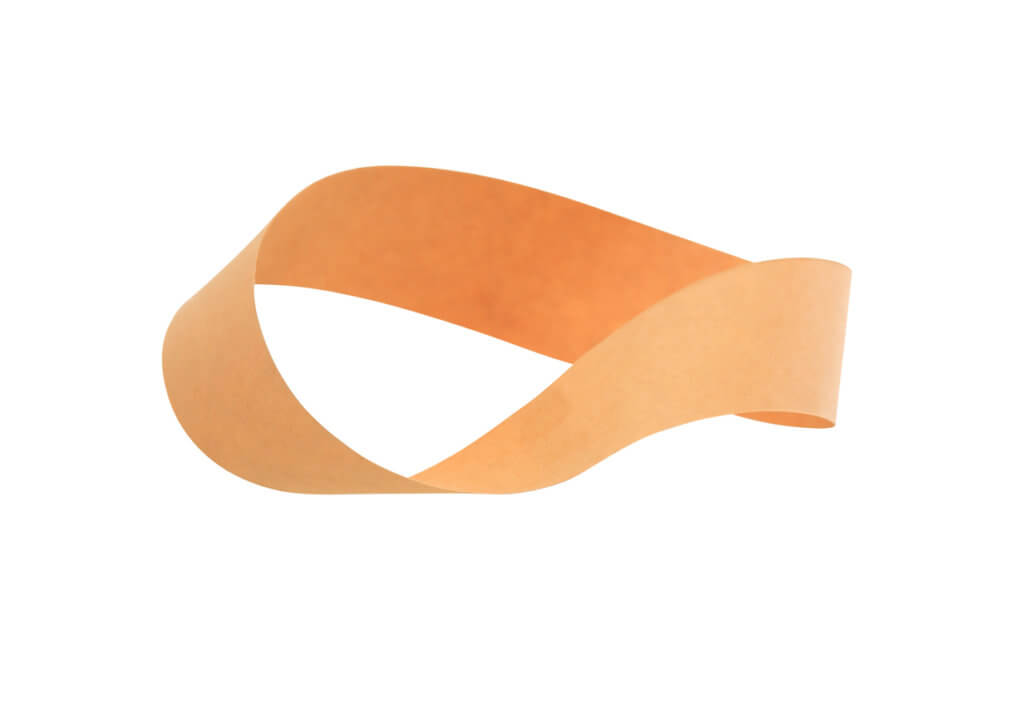
Ujjayi for Advanced Practitioners
More to Ujjayi
If you’ve practiced for several years, then you already know that there’s always more to yoga.
And there’s more to Ujjayi beyond getting the sound right. For Ujjayi Pranayama is a breathing practice.
It’s said if you lose the breath, you lose the practice. The implication is the breath should drive the practice.
That’s not why typically happens when we start out because when we’re newer, we are building our level of fitness.
Later down the line, we kind of forget or just take the breath for granted.
Look closely at how many people practice Ujjayi, and you’ll see that they tend to get into a posture and then “layer” the breath on later. This is the opposite of the intention of the breath.
When we have a breath driven practice, the posture comes out of following the breath. The breath connects you to the feeling of the pose. It lets you trace the body as the muscles engage. You can follow the sensations of expansion as you give the posture back to the breath.
Focusing on Ujjayi simplifies the practice too. You don’t have to think of the myriad of mechanical adjustments but can feel the overall effect of being settled. Prioritizing the breath makes the postural experience more intuitive.
Many practitioners have never experienced this.
Ujjayi and Balance
Ujjayi unlocks the subtlety of the practice. When you pause and notice it, you often find there are bumps and breaks—the breath is not continuous.
But you can make it fluid. This will take yoga and the art of receiving.
Ujjayi lies in the balance of relaxation and effort, prana (inhale), and apana (exhale). The tension in the traditional pairs of opposites gives us another opportunity to find harmony.
You can absolutely overdo it. A beautify paradox of Ujjayi is there to help you relax and pay attention. Yet, it can be over-controlled, which takes you out of relaxation and into tension. There is a balance to find.
Once in balance, you notice the experience of Ujjayi is like a Möbius strip rather than a two-sided coin. The inhale becomes the exhale, and the exhale becomes the inhale.
Sound and Speed
As a sonic object, Ujjayi invites us to witness and receive sound as a further form of engaging our senses. It’s yet another entryway into the house of awareness, a way to bring more of ourselves to the practice.
You can adjust the pace of Ujjayi, depending on the effort you are trying to support in the practice. For Surya Namaskara A & B, Sun Salutations, it makes sense to quicken respiration. During long holds, it’s more appropriate to lengthen and relax into the breath.
All of this exists in Ujjayi. AND, it will show you what you value most in the practice and in life. Because of its subtle nature, it can show you if you value gross manifestations, big, loud, stimulations, of if you appreciate the quieter aspects of life as well.
Ujjayi holds up a mirror to our control issues and the use of force and strain.
Glottis
In many descriptions of Ujjayi, it’s said there is a slight constriction of the glottis.
But what is a glottis?
Below is a picture of it. The glottis is the space between the vocal folds. Your vocal folds open and close, depending on whether they are relaxed, speaking, or whispering.
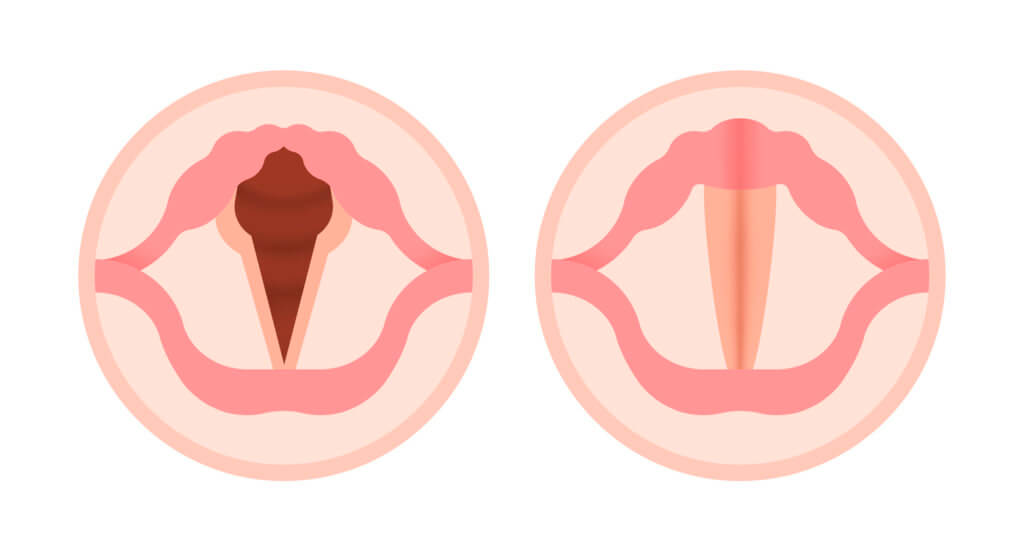
In Ujjayi, the vocal folds have the same position as a whisper where the folds are slightly open, and the glottis is constricted.
It’s important to remember the picture is two-dimensional. To get a better idea, imagine the trachea, a.k.a windpipe, as a cylinder. The vocal folds are like a gate at the top of this. They open and close to regulate the sound of the wind.
"The moon shines bright. In such a night as this.
When the sweet wind did gently kiss the trees,
and they did make no noise, in such a night…” ~
William Shakespeare, Merchant of Venice
And just for reference, the trachea is part of your respiratory system. The esophagus is the food pipe and belongs to the digestive system.
How to Practice Ujjayi
Step by Step Directions for Ujjayi Breath
To learn the technique of Ujjayi, begin by sitting down.
Start with the Sound
- Take the palm of your hand up to your mouth. Imagine your hand is a mirror and that you are going to “fog” it up with your breath with your mouth open. When you do this, it produces a clean “hollow” sound kind of like “haaaaaaaaaaa.” It feels warm against your skin.
- The tricky part is making the same sound on the inhale. You can hold up a hand in front of your mouth, and another at the back of your neck. Two mirrors. Try to fog them both up—the exhale fogs up the front mirror, the inhale the back.
- Once you are adept at fogging up the mirrors, create the same sound and sensation—by breathing through your nose only.
- Breathe in a balanced manner in through the nose and out through the nose. The inhale and exhale are equal, and the quality of sound is even.
- Breathing in this way causes a slight constriction of the throat. The glottis partially closes just like when you whisper speech. As the air goes in and out, it creates a minor “rubbing” sensation of the throat.
This gives you a feel for the sound of Ujjayi.

Move your Belly
- Next, exhale completely by lightly drawing your abdomen towards your spine. You are gently pulling your belly toward your back. We start by emphasizing the exhale because it’s easier to do. Exhaling will also allow you the take a more enjoyable inhale.
- Inhale by releasing the abdomen. As it goes out, it will automatically draw air into the lungs. While it may feel like you are “breathing into your belly,” that is only the sensation. Air only goes in and out of your lungs. If the air traveled any further, you’d need surgery quickly.
- Start the sensation of breath (inhale) low—the pelvic floor. Then imagine “filling” your torso.
Now add your Chest
- Keep the low sensation of the breath going and bring your focus to your chest.
- As you inhale, try to fill your chest with air. To do this, think of your ribs trying to make space in your chest for your lungs.
- Notice how all four sides of your torso expand in opposite directions. You can feel this if you place your hands on the sides of your ribs. As you exhale the air from the chest, all four sides draw in.
There is some controversy over whether breath should be “top-down” or “down-up.” Should you start, your breathe from the chest and then “fill the belly” or vice-versa.
I’ve started these instructions by exploring the belly because many people have a hard time feeling their belly move with the breath. Once you get the hang of relaxing your belly and feeling it move with the breath, switch over and fill the chest first, then the belly.
- A simple way to do this is to put a hand on your chest and then on your belly. Feel your chest lift your top hand as it fills, and then your bottom hand moves as your belly moves.
Do not overemphasize one particular area by trying to “breathe correctly.” Both your chest and abdomen should move freely. This is sometimes called diaphragmatic breathing. All breathing, though, except in rare cases of paralysis, uses the diaphragm.
Put it Together
- Exhale by drawing your abdomen lightly towards your spine.
- Inhale by releasing your abdomen and feel the sensation of breath fill your chest, then your belly. Air only comes in from the top, down in your lungs.
- Now add the sound of Ujjayi.
- Breathe the air in and out slowly and rhythmically, finishing the Ujjayi breath.
The breath is relaxed and never done using force or strain. We think of it as generous and nurturing.
Why do we use Ujjayi (instead of another breath)
Why don’t we just use a regular breath?
You can. But Ujjayi gives you a couple of extra benefits.
First, it’s a big hook, that is, something easy to pay attention to.
If you just used your “regular breath,” it would be hard to notice.
It helps you to relax and focus amid stress.
Top athletes and performers focus a lot on their breath to stay relaxed during exertion. Whether they are trying to drive a car, shoot a basket or finish a sonata, breathing is a big part of staying “relaxed and loose,” yet alert.
Ujjayi does the same.
When to Use Ujjayi Breath
Ujjayi is a component of vinyasa yoga, characterized as being a “flowing” style where students move from posture to posture using breath. The movement follows the breath.
Think of the waves of an ocean propelling a surfboard forward; if the wave (breath) ends, then the surfboard (movement) stops. The breath initiates all movement.
When you use Ujjayi in asana, physical practice, try to spread the breath evenly throughout your entire movement. For example, if it takes you a count of five to breathe in, that’s the amount of time it should take getting from standing to forward fold.
If you get to the next posture and still are inhaling, you may be moving too quickly. You might want to move a little faster if you always run out of air.* The idea is to have “one breath, one movement”. A skilled teacher will make this accessible in a group class.
*Yes you can always take an extra breath
Ancient Yoga Breathing
The Upanishads, “some of the most important literary products in the history of Indian culture” (Patrick Olivelle, Upanisads) specify how to breathe:
- The inhalations should be like drinking water through the stem of a blue water lily.
- The exhalation is compared to the flow of oil—smooth and uniform, as when you pour oil from a ladle. Srivatsa Ramaswami, The Complete Book of Vinyasa Yoga
The Hatha Yoga Pradipika (HWP) says Ujjayi is felt, “from the throat to the heart.” (2.51) Ujjayi can be a specific practice, but also happens spontaneously when concentration deepens.
The HWP goes on to describe it as sonorous, meaning it has a full, deep sound.
Off the Mat
The practice of yoga and Ujjayi can be taken off the mat and into the world.
It’s helpful because it fosters a relaxed, yet alert state.
Feeling anxious? “Voluntarily slowing the breathing during a period of stress counters a number of physiological components of stress while reducing feelings of anxiety.” Timothy McCall, M.D., Yoga as Medicine.
Need to navigate a stressful situation or give a presentation? Ujjayi breathing can help you find that place where you feel calm and clear in as little as two minutes.
To do so, close your eyes, and breath in and out rhythmically for ten breaths.
Students report to us how it helps them in times of high stress, like an automobile accident, or great joy, like giving birth.
Final Thoughts
One other benefit of practicing yoga with Ujjayi, you can find a relaxed state much quicker.
Because Ujjayi is typically done in stressful situations, yes, I’m talking to you yoga postures, it teaches you how to relax in the face of difficulty. And the more you do it, the better you get at it.

